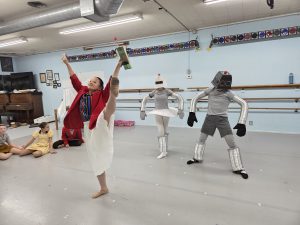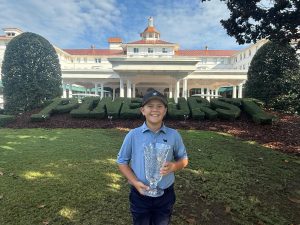Most people would be proud to say that they had written one book. By the time he was 90, Cupertino resident Jack Hasling, now 94, had written 12 books. How did he do it?
“I could not have become a writer if it had not been for spellcheck!” quipped Hasling on a fall Sunday at an author meet and greet outdoors at Sunnyvale Presbyterian Church, where he is a long-time member. “I like to write! I like to get published, too.”
Hasling is a former radio announcer and disc jockey and a speech communications professor emeritus at Foothill College, where he taught from 1966 – 1991. His initial publishing success was The Audience, The Message, The Speaker (1970). Now in its 8th edition (2009), it became a bestselling college speech text for publisher McGraw-Hill and was translated into Chinese.
It filled a void.
When he started teaching, he wrote his own class syllabus because the only speech books available were graduate level or Dale Carnegie’s How to Win Friends and Influence People. After a McGraw-Hill book representative saw Hasling’s speech syllabus, Hasling got invited to transform it into a text.
“I added the element of listening as part of a speech text,” said Hasling. “Nothing was written on how to listen at that time. I coined the expression, ‘The message is the message received.’”
In 1980, McGraw-Hill published Hasling’s second book, Fundamentals of Radio Broadcasting. Hasling said that it was hard to get books published until the advent of self-publishing and Amazon’s Print on Demand, which prints one copy at a time as orders come in.
He pointed out that novelist John Grisham’s first book was rejected by dozens of publishers before getting accepted. Then, Grisham traveled around selling copies out of his car trunk.
Hasling next wrote a text on group discussion, then two children’s books, a satirical book on how the Earth was actually created, one on everyday speaking to get your point across, three slender volumes of humorous verse and two novels reflecting social issues.
“Hillview: A Novel (2001) is really about Foothill College and me,” confided Hasling, a California native. “Its value is that it tells events of the decade from 1965 to 1975. It was a revolutionary period—flower children, women’s lib, the Vietnam War protest. And revolution in communication with books like Games People Play and I’m Okay, You’re Okay, helping people communicate at an honest rather than superficial level.”
Unlike contemporary poetry, Hasling’s poems are rhymed with a punch line, which is why The New Yorker told him they’re not interested in them.
“They’re fun to read aloud. I think poetry is designed to be read aloud,” said Hasling. Listen to him read Salamander the Great! on YouTube.
Hasling wants people to know what he has to say, so he writes his poetry with a clear message.
“It’s not enough to have a thought. You have to express the thought in a way that people can understand,” said Hasling, who was editor of his high school newspaper, The Berkeley High Jacket. “The talent that I have is taking complicated issues and making them understandable.”
“You have to have a good editor; it’s not enough to be your own editor,” advised Hasling. “It’s the expensive part of getting published. You either have to pay for a good editor—or marry one.”
Luckily, Hasling married one—Elsie Hasling—in 1977.
“Don’t expect to get rich writing. It’s a hobby for me. It’s a way to share my ideas,” said Hasling, adding, “I like my ideas.”
I’ve Thought Every Thought I Can Think is the title of his 2009 book of poetry.
Staying well ahead of his final publishing deadline, Hasling wrote his own obituary.
“After all, I’m the most informed on my life,” he said.












0 comments